Welcome to India! Upon your arrival you will be met by your driver and transferred to Pullman , your overnight accommodation.
Spend some time relaxing and have lunch at the hotel. You can organise to visit some of Delhi's sights or simply rest ready for your early morning flight to Ladakh the following day.



Visas - you will need to purchase a visa to enter India but this can be done electronically and is usually a simple process.
You cannot take Indian Rupees into the country so it is best to buy them at the airport. The exchange bureaus are situated just before baggage reclaim but it is much better to bring cash as the card transaction fees are very steep.
Most of your meals are already included in the cost and in Delhi the hotel will readily accept card payments. It is good to have cash for your time in Ladakh when you might have occasion to tip local people
In the morning, a private transfer to the airport will be arranged. Your flight will depart from New Delhi and arrive at Leh before lunch. Upon arrival at Leh Airport, a private transfer to Grand Dragon will be organised.
It is advised that you spend the rest of your day at leisure, acclimatising to the high altitude and rarefied air - this is considered essential as Leh is situated at an altitude of 11400 feet and a flight up from the plains means that you have to acclimatise gently without exerting yourself. The 2 ½ days scheduled here is the minimum required time to acclimatise before going to a higher altitude and doing a fair amount of walking.
Over the next few days in Leh, you will get an opportunity to meet a representative from the Snow Leopard Conservancy for a briefing on the history of snow leopard conservation in Ladakh. This will help you get some insight into the current threats to snow leopards and the strategies adopted to combat these threats.



You will have a private vehicle at your disposal during your time in Leh which will help you to not over exert yourself during your acclimatisation to the high altitude whilst enjoying everything this fascinating place has to offer.
Leh is a fascinating labyrinth of winding streets and quaint bazaars. The main street is open and airy, with rows of shops on either side. Post breakfast, you will get an opportunity to go on a full day tour and explore the city of Leh. The Royal Palace, which dominates the town, is very reminiscent of the Potala in Lhasa and other Tibetan Buddhist monasteries. The large chortens, prayer flags and mud brick houses with flat roofs are a dramatic culture change from the hot, teeming frenetic rush of any city.
A visit to the Snow Leopard Conservancy is highly recommended; here, you will see the efforts made by the authorities along with the local community to conserve the endangered Snow Leopard.
In the afternoon, visit the Thiksey monastery, the most mesmerizing monastery of Ladakh, perched high on a hill above the Indus river, its buildings are arranged at various levels, leading up to the private accommodation of the incarnate lamas on the summit. From here, one commands a magnificent view of the valley. The Gompa ( or Tibetan Monastery )possesses a rich and beautiful collection of hundreds of hand-written or painted prayer books.



The monastery contains a 15-meter tall Buddha statue, constructed in 1970 to commemorate Dalai Lama during his visit to Thiksey. The statue is made of clay and covered with gold paint, it is the largest Buddha figure in Ladakh and took about four years to be constructed. The statue is filled with the Kandshur and the Tandshur - volumes of Buddhist canonical texts. The statue was made by the local craftsmen of Ladakh and represents Maitreya, ("compassion" in Sanskrit) the Buddha of the Future. The prophecy made of the future Buddha is that the world will be undergoing such chaos that ‘He’ will teach compassion to the people.
Today you set out for an exciting drive east heading towards Taglang La and the villiges of Gya, Lhato and Meru.
It’s a fantastic drive taking you away from the valley of the Indus up a subsidiary valley to an extraordinary area even by Ladakhi standards that marks the line where the Indian mainland collided with and drove under the Asian land mass. There is some dramatic scenery here and you have a chance of sighting wildlife including Blue Sheep, Golden Eagles and Bearded Vultures. Rafts of Red-Billied Choughs perform synchronized aerobatics in this area and in the fallow fields you have the chance of seeing the very beautiful Tibetan Partridge and the more common Chukor Partridge.



This will be exciting day as you drive to Ulley.
Following breakfast you check out of the hotel and your driver will drive west on the road to Kargil and Srinagar. En route you pass through the small town of Nimmu – one of the most important areas in Ladakh and where the Zanskar river meets the Indus. After an hours drive from here, you head north on a road marked to Likir – one of Ladakh’s famous Buddhist monasteries.
The road ahead of Likir is all a part of the snow leopard country. The landscape here is even bigger, more expansive and open, until you turn off onto a dirt road, winding up in a narrow valley, following a stream called the Ulley Chhu. Smaller valleys intersect and the guides have their heads craned all the time, scanning the hill sides and the skyline for any silhouette.
This is excellent Ibex country and there are few more evocative sights than a magnificently horned male Ibex standing vigil on some impossibly narrow outcropping, a few thousand feet over a plunging cliff. Ulley village, west of Leh is an area that is only recently being developed for Snow Leopard watching.
Settle in on arrival and acclimatise to the higher altitude of Ulley. You will be based here 7 nights and the advantage of Ulley is that it is relatively free of tourism
As well as being less touristy than other Snow Leopard destinations, Ulley is supremely situated with easy access to 3 important valleys, which are also home to urlal, Ibex, wolf and Himalayan fox.
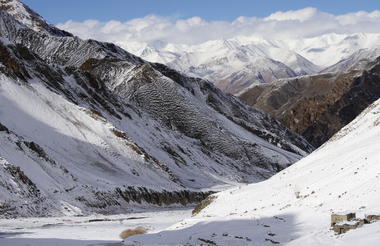
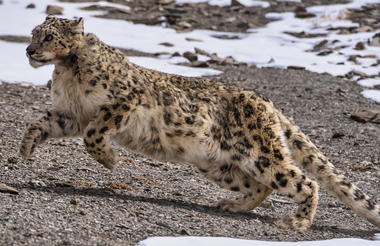
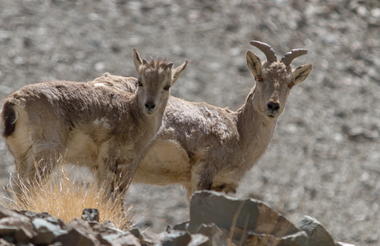
Our trackers -Norbu is an exceptional tracker and spotter whose entire being seems to be narrowed down to the field of vision of his binoculars. Over the next few days you explore the area on foot and SUV's with Norbu tracking the snow leopard. You will be amazed at the sheer dedication and commitment he brings to his trade and the effort he makes to ensure that his guests leave happy. Norbu Interacts closely with the local people and uses the network of local intelligence to narrow down the likely sites. In the process there will also be plenty of opportunity for you to get insights into local folklore, as well as learn about local customs and traditions
The Snow Leopard Lodge is the only dedicated wildlife lodge in Ladakh. It began originally as a homestay owned by one of Ladakh’s top snow leopard trackers under the auspices of a program initiated by the Snow Leopard Conservancy designed to use tourism as a conservation tool for the preservation of snow leopards and their ecosystem by putting tourism revenue directly into local community



The Lodge commands excellent views down the valley and the high mountains surrounding it and you are certain to see Ibex from here and if you are lucky much other wildlife including Wolf, Himalayan Fox and perhaps even Snow Leopard.
The biggest advantage of Ulley is the fantastic road access that takes guests right up to the wildlife spots on most occasions. We do encourage guests to walk (simple walks) into the valleys and to some low passes as these are the best ways to connect with the starkness of the landscape and develop a real appreciation and understanding of the wildlife of the region. Having said this, there is plenty to do for those who prefer not to walk. The fitness and health of the guest will be taken into account when the plans are made.



The trans-Himalaya is the region comprising the Karakoram, Ladakh, Pangong and Zanskar range and the Tibetan plateau. It is essentially a cold desert that lies in the rain shadow of the Himalaya. The general altitude of the landscape is 4000m. Temperatures in the winter can drop to -20 degrees at night and at dawn and dusk but on clear days the bright sun and the lack of humidity can make it very warm. (It still stays cold as soon as one steps into the shade).
The spotters (and driver too) are highly skilled at tracking and finding the wildlife of the region and all guests will go out with one of our experts on day excursions.
The guests will have vehicles with them throughout the trip as most of our experiences involve driving to different parts of the Sham area. The advantage of Ulley over other snow leopard viewing areas of the region is the fantastic road network that runs through the habitat making it possible to access and operate in a larger area.



What should I bring?
The conditions in the region are very variable so keeping all the factors in mind, this list below is the recommended set of equipment that one would need when visiting the snow leopard lodge.
- Thermal underwear
- Fleece jacket
- Thick down Jacket
- Breathable waterproof jacket and lowers
- Ankle length (for ankle protection while hiking) waterproof shoes with thick soles
- Hiking trousers ( down or padded trousers work well in these conditions)
- Working gloves and woollen gloves on top ( the new synthetic waterproof gloves are a good substitute)
- Hand and toe warmers ( depending on how one’s body reacts to the temperature – these also act as good camera battery and phone battery warmers as batteries tend to die out quickly in colder weather )
- Dark ( black ) shades ( the wrap around kind are preferred as the sun light can be very harsh and is amplified and bounced around by the snow)
- Smaller waterproof daypack and water bottle for the day trips.
- Sunscreen ( SPF 50+ ), a good moisturiser and petroleum jelly
- Socks ( thick and thin to make two layers )
- Warm night wear ( the rooms are heated but we still suggest guests sleep with warmer clothes on like long trousers and full sleeve night wear and a fleece too if they feel comfortable as the temperatures can drop a lot post 12 or 1 am)
- Caps or Ski Caps – ones that cover the ears also to shield from the cold winds on bad weather days
- Head torch with extra batteries
- Walking Pole ( optional)
- Spare fully charged batteries for cameras if you are carrying a digital
- Guests with larger cameras are suggested to carry a good tripod that can stay stable in windy conditions.
- Medication as required or prescribed by your doctor
Leh is completely cut off in the winter months and this makes bringing in fresh supplies a lot harder than usual. Food at the lodge is cooked using ingredients that are available at that time in the local markets and villages. Most of the food is locally sourced. The cuisine is a mix of indian, Chinese, Ladakhi and continental meals and are served on a fixed menu basis. Guest preferences are taken into consideration ( if informed in advance ) when these menus are setup. Specific food requests or allergies need to be mentioned in advance so that the right ingredients can be flown in on time. Both alcoholic (specifics based on availability in Leh) and soft beverages are served.



Heating in the rooms is done using electric heaters and kerosene burners (Bukharis as they are known locally). Gas heaters are used in periods of long power outages or limited of fuel availability.
Running water is not available at the lodge due to the remote location but water will be provided at all times ( both hot and room temperature ) in buckets. Even the toilets will have to be flushed down using the water from the buckets. Hot and room temperature water will be provided in buckets on request. (24hrs)
The lodge works closely with the Snow Leopard Conservancy India Trust. A set percentage of what we charge the guests is contributed directly to the SLC IT who use it in turn to help the people of the Sham area with everything from small insurance schemes, carnivore proofing the livestock pens and in conservation and awareness initiatives. Guests who wish to contribute separately to the SLC IT to help them boost their conservation efforts can get in touch with us via email



If there is someone who has lost livestock in the course of your stay to wildlife, and if we see the animals owing to that kill, we recommend that some amount of money is contributed by the guests to that family to keep the ideas of wildlife among the local communities positive.
Hopefully, having 7 nights at Snow Leopard Lodge will have given you the opportunity to see not only the magnificent snow leopard but also many of the other wildlife species that call this unique area home.
Even without the iconic wildlife, Ladakh is a stunning and remote part of the world which will leave you speechless



The trans-Himalayan region of Ladakh cannot be summed up as one large cold desert. The multiple habitats here like the barren mountains, snow peaks, glaciers, rocky cliffs, undulating grassy hills, marshes, lakes, rivers and dry flat plateaus have given rise to a wide variety of wildlife that have adapted well to one habitat or the other. Apart from the habitat diversity, the geological location of Ladakh, with the Tibetan Plateau to the east, the Karakoram and the Hindu Kush to the north and north-west, the Great Himalayas to the south have made this land a meeting place for various habitats and species, which otherwise would never occur together. Species like the Tibetan and Himalayan Snowcock, the two species of hares, five species of Pikas; the Ibex, Urial, Argali and the Bharal – birds and animals that have arrived from the east, west, north and south respectively, meet in the small pocket of unique wilderness that is Ladakh.
Though the mammals and birds of Ladakh have been documented regularly ever since the gates to Ladakh opened, there is a still a lot of research to be done, especially related to the migratory patterns of birds and the lesser fauna of the region. We have put together a list of the species that we have documented along with others that have been recorded by reliable sources.
After breakfast this morning you will retrace your steps back to Leh in your private vehicle


Early morning a private transfer to Leh airport will be organized, for your onward flight to New Delhi. On arrival, a private transfer to Pullman will be arranged.
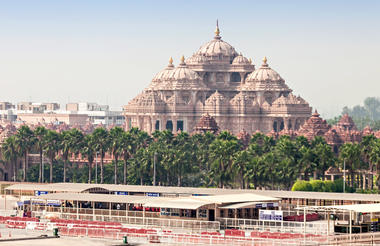

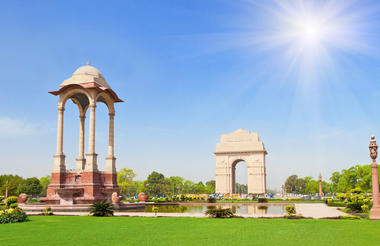
Today you will be transferred back to the airport in good time for your onward flight.
An optional extension to this tour is to add three nights in Ranthambore with 4 exclusive jeep safaris included





